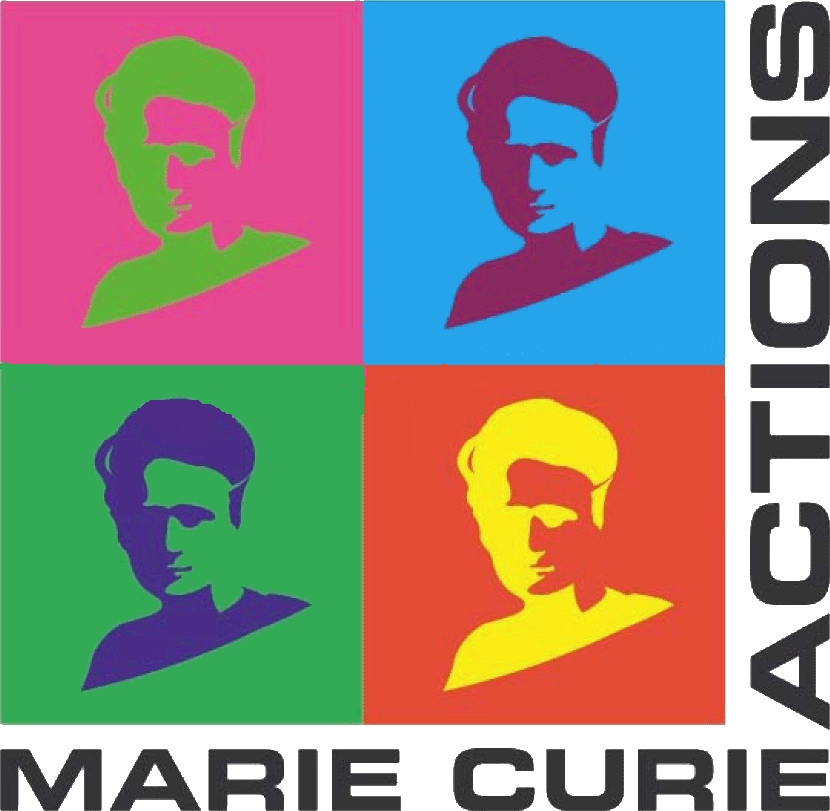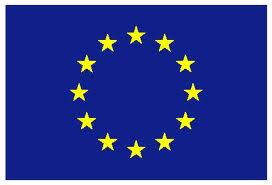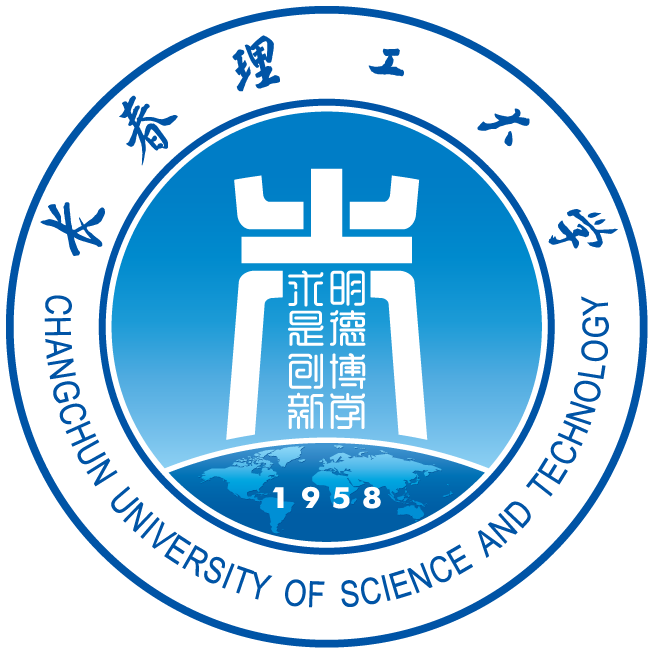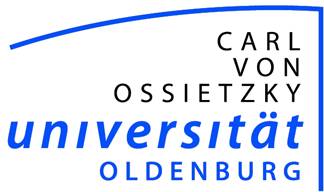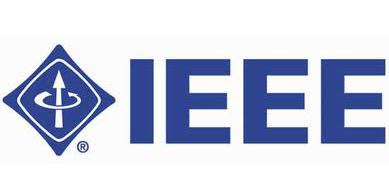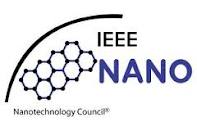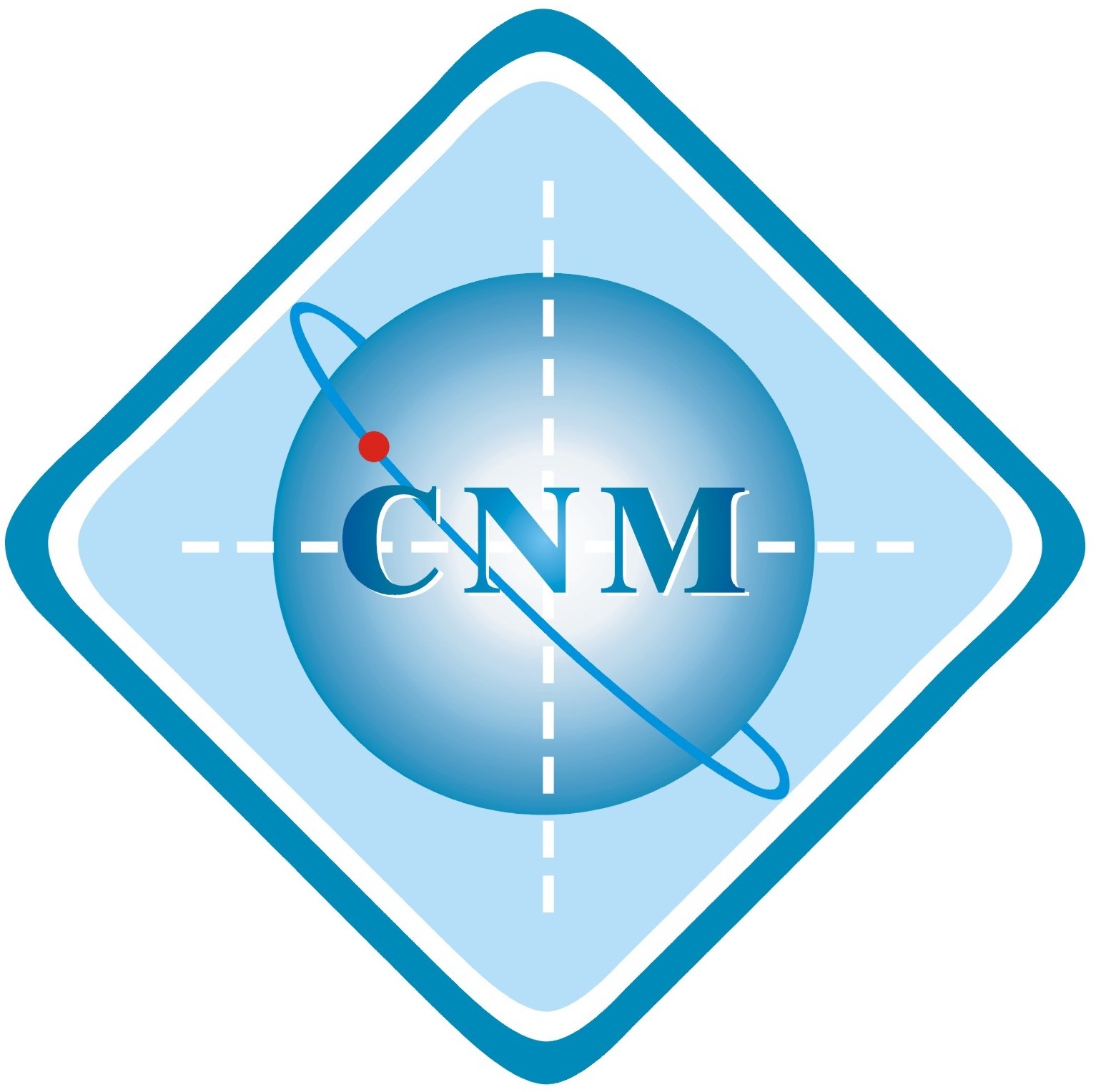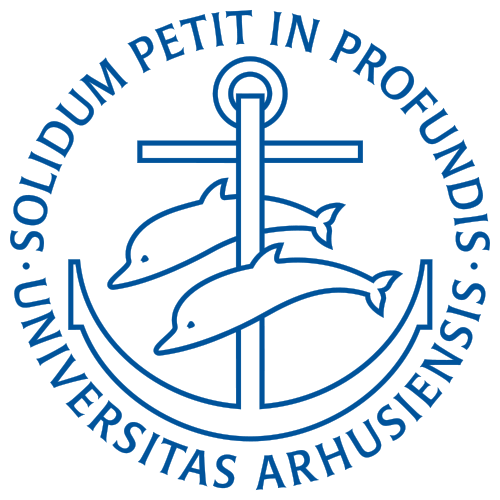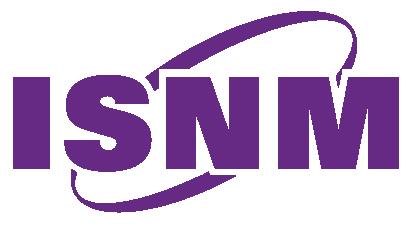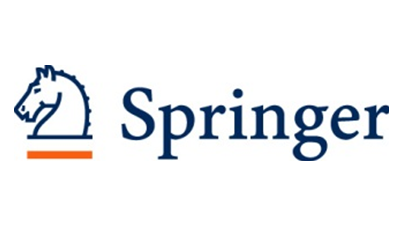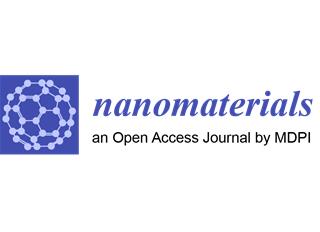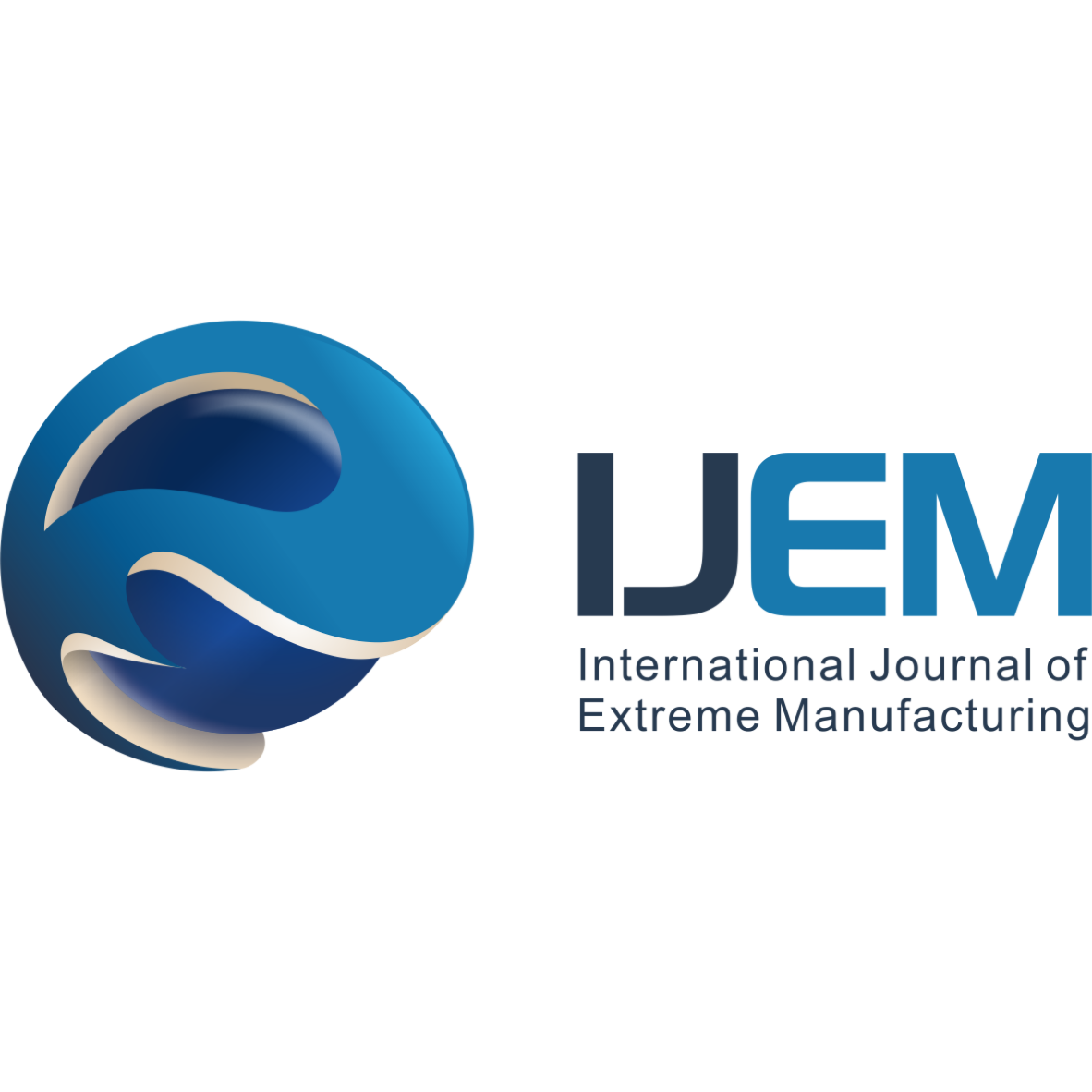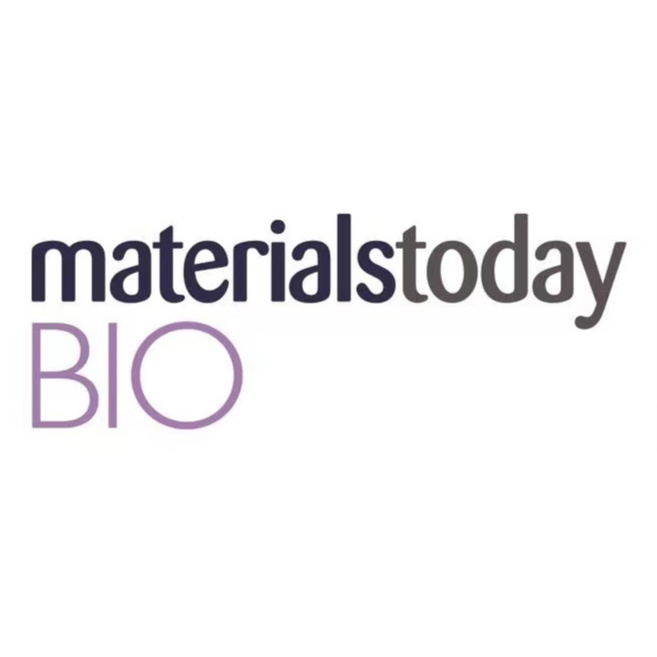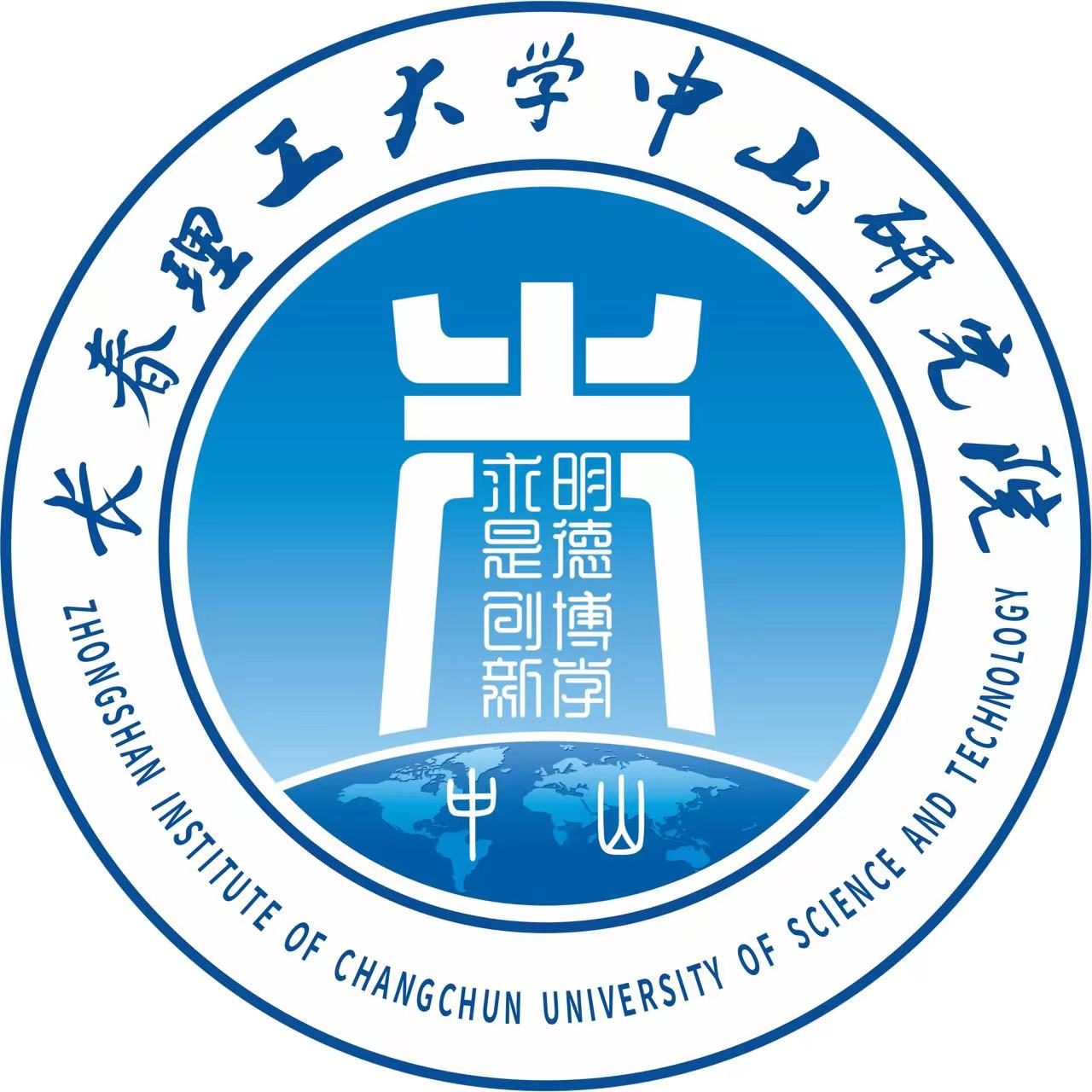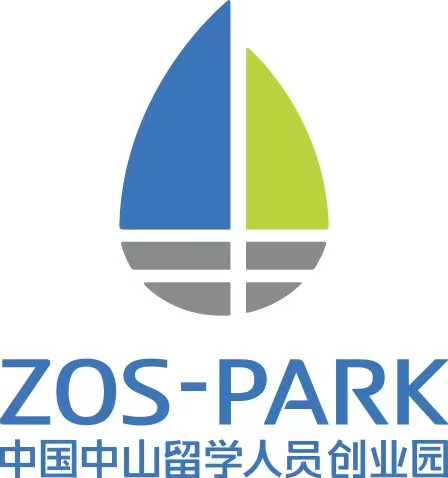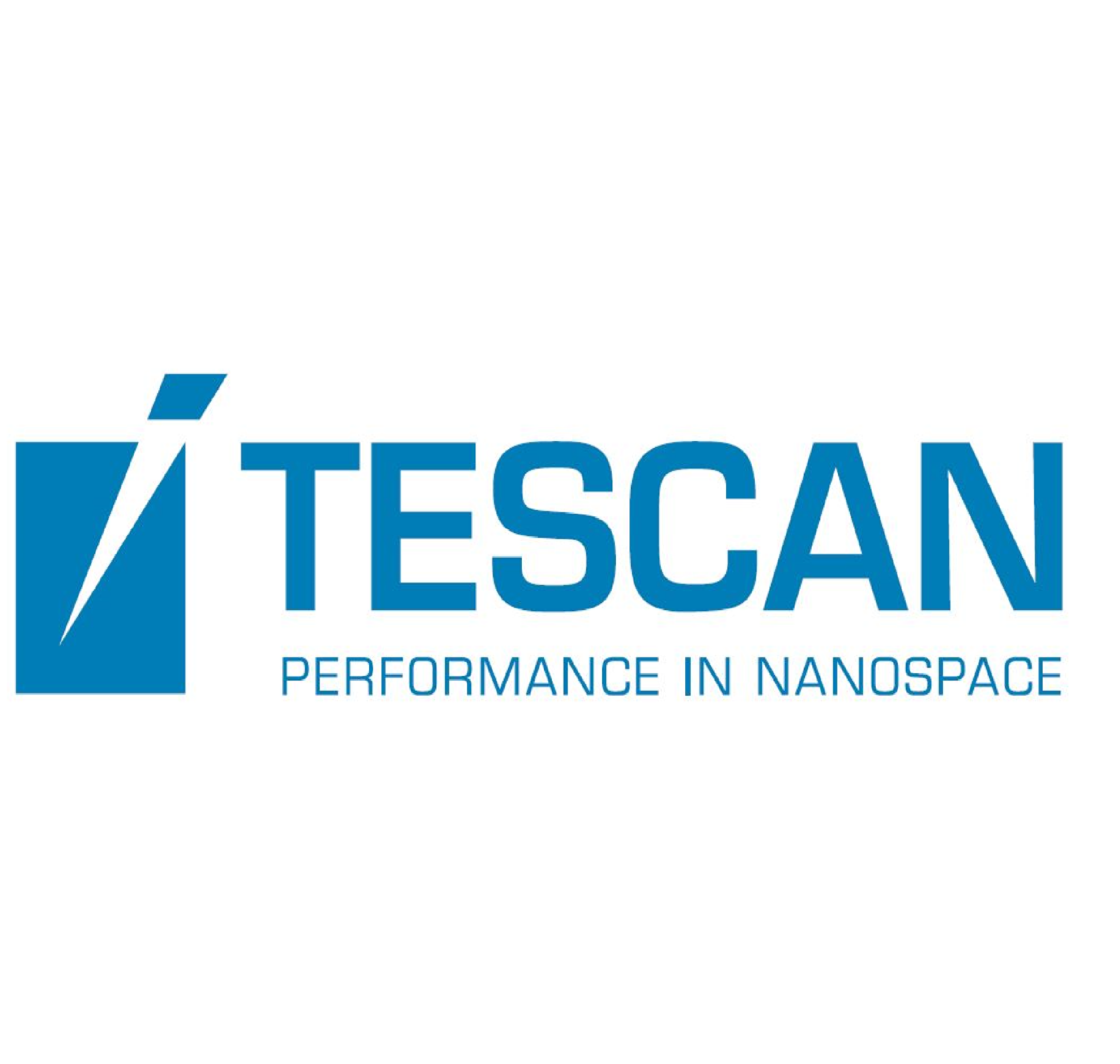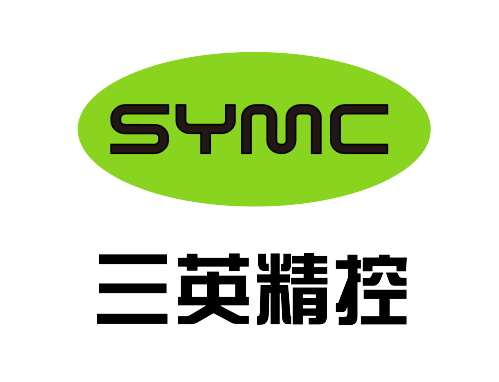| |
|

|
|
B. Erdem Alaca |
|
Professor |
|
Department of Mechanical Engineering |
|
Koc University |
|
Associate Vice President for R&I |
|
Turkey |
|
Personal homepage |
|
Title: Monolithic Fabrication and Surface Metalization of Single-crystal Suspended Sub-micron Si Nanowires with 3D MEMS Architectures |
|
Abstract: Thanks to their superior mechanical, electrical, and optical characteristics, silicon nanowires attract much attention in applications ranging from biochemical sensors and inertial measurement devices to energy storage systems. This study introduces a new method for the scalable production and monolithic integration of sub-micron silicon nanowires with microelectromechanical systems. In-plane (width) and out-of-plane (thickness) critical dimensions of 600 nm and 300 nm, respectively, are demonstrated for sub-micron silicon nanowires with an etch depth of up to 50 µm. Finally, the use of stencil lithography is also demonstrated by selective coating of sub-micron silicon nanowires with a gold layer. Having moderately larger dimensions compared to silicon nanowires, their sub-micron counterparts proved to cut fabrication costs and relieve fabrication-related challenges, as they improve yield and repeatability while they impart added functionality to electromechanical sensors, whose further miniaturization heavily relies on such multiscale processes. |
|

|
|
Karl F. Böhringer |
|
Professor |
|
Electrical & Computer Engineering and Bioengineering |
|
Director, Institute for Nano-Engineered Systems (NanoES) |
|
University of Washington |
|
USA |
|
Personal homepage |
|
Title: MEMS Meta-Optics |
|
Abstract: Miniature lenses with a tunable focus are essential components for many modern applications involving compact optical systems. While several tunable lenses have been reported with various tuning mechanisms, they often face challenges with respect to power consumption, tuning speed, fabrication cost, or production scalability. In this work, we have adapted the mechanism of an Alvarez lens – a varifocal composite lens in which lateral shifts of two optical elements with cubic phase surfaces give rise to a change in the optical power – to construct a miniature, microelectromechanical system (MEMS)-actuated metasurface Alvarez lens. Implementation based on an electrostatic MEMS generates fast and controllable actuation with low power consumption. The utilization of metasurfaces – ultrathin and subwavelength-patterned diffractive optics – as optical elements greatly reduces the device volume compared to systems using conventional freeform lenses. The entire MEMS Alvarez metalens is fully compatible with modern semiconductor fabrication technologies, granting it the potential to be mass-produced at a low unit cost. We will discuss ongoing work on imaging in the infrared and visible range, with applications ranging from machine vision to endoscopy.
 
|
|

|
|
Menglin Chen |
|
Professor |
|
Department of Biological and Chemical Engineering |
|
Aarhus University |
|
Denmark |
|
Personal homepage |
|
Title: Exploring Electrohydrodynamics Based Functional Nanofibers as Multi-Dimensional Nano-Biointerfaces |
|
Abstract: The significance of the overall fibrillar and porous nanoscale topography of the extracellular matrix in promoting essential cellular processes has led to consideration of biomaterials with nanofibrous features. Of the many methods for fabricating fibers with micrometer and nanometer diameters, electrohydrodyanmics (EHD) based spinning is simplest, most straightforward and cost-effective. This approach becomes intriguingly powerful when remarkable morphological features were combined with unique chemical, physical, or mechanical functionalisation with ease and control.[1,2]
Alongside the widely studied pathways of biochemical regulation by chemokines, cytokines and growth factors, one often-overlooked but significant influence over the behavior of biological systems is electrical signaling. Voltage gradients among all somatic cells (not just excitable nerve and muscle) control cell behavior, and the ionic coupling of cells into networks via electrochemical synapses allows them to implement tissue-level patterning decisions, which is called developmental bioelectricity. Electrical modulation is therefore a potential target for many new therapies for a range of diseases and biological functions. Our current research focuses on advancing EHD technologies to explore multi-dimensional nano-biointerfaces that synergise the nanostructural induction and the bioelectrical/biochemical signalling to affect cellular behaviours, for biomedical applications in neural and cardiac stimulation and tissue engineering[3-5].
References:
[1] Y Su, Q Li, J Amagat, M Chen, “3D spring-based piezoelectric energy generator”, Nano Energy 2021, 90, 106578
[2] Y Su, T Qiu, W Song, X Han, M Sun, Z Wang, H Xie, M Dong, M Chen, “Melt electrospinning writing of magnetic microrobots” Advanced Science 2021, 8 (3), 2003177
[3] CA Müller, P Li, Y Wang, M Dong, B Tian, M Chen, “Bionic Opto-responsive Fiber for Directing Neurite Growth”, Materials Today Nano, 2023, 100311
[4]J Amagat, Y Su, FH Svejsø, A Le Friec, SM Sønderskov, M Dong, Y Fang, M Chen, “Self-snapping hydrogel-based electroactive microchannels as nerve guidance conduits”, Materials Today Bio 2022 16, 100437
[5] J Amagat, CA Müller, BN Jensen, X Xiong, Y Su, NP Christensen, A Le Friec, M Dong, Y Fang, M Chen, “Injectable 2D flexible hydrogel sheets for optoelectrical/biochemical dual stimulation of neurons”, Biomaterials Advances, 2023, 213284
Acknowledgements: We gratefully acknowledge the grants from Independent Research Fund Denmark, Lundbeck foundation, Novo Nordisk Foundation, Carlsberg Foundation and Innovation Fond Denmark, to support our research. |
|

|
|
Julia Gorelik |
|
Professor |
|
Cellular Biophysics |
|
National Heart and Lung Institute |
|
Imperial College London |
|
UK |
|
Personal homepage |
|
Title: Functional Imagining of Nanodomains in Cardiomyocytes |
|
Abstract: This talk will examine new development in cell compartmentation signalling in cardiomyocyte during heart failure. Heart failure (HF) is a major contributor to the cardiovascular disease burden and impacts significantly to global health expenditure. In HF, a progressive loss of a network of deep invaginations, transverse tubules (TT), results in molecular remodelling that includes the alterations in beta adrenergic receptors (βARs), ion channels, in particular L-type calcium channels (LTCCs), Ca2+-handling proteins, and proteins mediating cell-cell coupling. This exaggerates cardiomyocyte Ca2+-handling abnormalities and leads to the development of triggers of arrhythmia (early and delayed after-depolarizations, EADs and DADs). These pathological changes could only be revealed recently thanks to the emerging new nanoscale functional imaging. Scanning ion conductance microscopy (SICM) gives topographical image of cells surface; it can be combined with other techniques to study living myocytes physiology. Scanning nanopipette serves as a precise drug delivery tool, which allows stimulation of nanodomains of signalling. Same nanopipette can be used in a patch-clamp recording of ion currents. Second messengers such as calcium and cAMP can be detected by FRET microscopy in combination with SICM. All the above techniques allowed studying remodelling of the TT and communication between various ion channels and receptors in the nanodomains of signalling. In this talk I will discuss recent findings regarding the loss of nanodomain functional integrity in HF. |
|

|
|
Selim Hanay |
|
Associate Professor |
|
Mechanical Engineering, and National Nanotechnology Research Center (UNAM) |
|
Bilkent University |
|
Turkey |
|
Personal homepage |
|
Title: Nanomechanical and Microwave Sensors with Single-Particle Resolution for Environmental and Biologic Applications |
|
Abstract: Identification of nanoscale objects in a high throughput manner can help us address critical challenges in environmental and biological fields, such as the quantification of micro/nanoplastic pollution, and screening for viral infection. To attain the necessary throughput and resolution, physical sensors based on resonators constitute an efficient platform. Here we will describe two sensor platforms —nanomechanical and microwave sensors— for detecting micro/nanoparticles, viruses and cells in air and liquid. Nanoelectromechanical systems (NEMS) offer an exquisite sensing platform due to their small sizes. However, these sensors had to be placed in multistage vacuum systems to transport nanoparticles and viruses onto the sensing structure via ion optics. Unfortunately, the use of vacuum systems cancels out all the benefits of NEMS technology being a chip-based, miniature platform. Recently, we have solved this issue by integrating NEMS systems with an on-chip ion lens for the efficient focusing and sensing of nanoparticles under atmospheric conditions. With this advance, bulky vacuum systems are no longer required, and the capture efficiency of the sensor is improved by several orders-of-magnitude. With this approach we obtained the mass distribution of SARS-CoV-2 virus and nanoparticles in the 20-100 nm size range within a short analysis time, operating under ambient conditions [1,2]. For liquid-based applications, we focus on microwave sensors since they can attain high sensitivity in liquid and are not limited by ion shielding effects at physiological ion concentrations, offering a means to probe the internal structure of microparticles. In addition to single-cell sizing experiments, we show dielectric-based material classification at the microparticle level by using polystyrene and soda lime glass particles as model analytes [3]. We will show the extension of capacitive detection for detecting single nanoparticles in liquid where microwave resonators are integrated by nanopore structures [4]. We will conclude by discussing future directions for integrated sensor technologies.

References:
[1] Erdogan, R. T et Al. (2022). Atmospheric Pressure Mass Spectrometry of Single Viruses and Nanoparticles by Nanoelectromechanical Systems. ACS Nano, 2022, 16, 3, 3821–3833.
[2] Kaynak, B.E. et Al. (2023). Atmospheric Pressure Mass Spectrometry by Single-Mode. Nanoelectromechanical Systems. Nano Letters, 2023, 23, 18, 8553–8559.
[3] Tefek, U. et Al. (2023). Permittivity-Based Microparticle Classification by the Integration of Impedance Cytometry and Microwave Resonators. Advanced Materials, 2023, 35, 46, 2304072.
[4] Secme, A. et Al. (2024), Dielectric Detection of Single Nanoparticles Using a Microwave Resonator Integrated with a Nanopore. ACS Omega, 2024, 9, 7, 7827–7834. |
|

|
|
Richard Haverkamp |
|
Professor |
|
School of Engineering and Advanced Technology |
|
Massey University |
|
New Zealand |
|
Personal homepage |
|
Title: Nano-Structure of Collagen Materials for Biomedical Devices |
|
Abstract: The main structural components in animals, skin, bones and tendons and other tissues, are constructed in part from collagen. Collagen based materials can also be manufactured to be used in medical applications such as surgical repair and wound care. The nanostructure of collagen determines many of the important properties of collagen and manipulation of this structure at the nanoscale can control some of the useful properties. We have investigated aspects of the nanostructure in collagen materials that lead to bulk strength, anisotropy, stiffness, and response to changes in water content. We have used synchrotron based small angle X-ray scattering (SAXS) to study fundamental and applied aspects of these materials. Here we describe some of the knowledge gained and how it is being applied to medical and other applications of collagen materials. |
|

|
|
Ulrich F. Keyser |
|
Professor |
|
Applied Physics |
|
Cavendish Laboratory |
|
University of Cambridge |
|
UK |
|
Personal homepage |
|
Title: RNA Detection Using Nanopores: From Isoform Analysis to Disease Diagnostics |
|
Abstract: Rapid identification of RNA molecules is a major challenge in biotechnology. This is driven by the discovery of RNAs that control cellular function ranging in length from a few to 1000s of nucleotides. Here we design three-dimensional nucleic acid constructs that enable the identification of short and long RNA molecules and nanopore readout.
First, we describe the identification of transcript isoforms at the single-molecule level using solid-state nanopore microscopy. We refold target RNA into RNA identifiers with designed sets of complementary DNA strands. Each reshaped molecule carries a unique sequence of structural (pseudo)colours. The sequence of structural colours of RNA identifiers enables simultaneous identification and relative quantification of multiple RNA targets without prior amplification. RNA IDs discriminate circular and linear transcript isoforms in a one-step, enzyme-free reaction in a complex human transcriptome using single-molecule read-out [1]. We will show recent results on analysing transcription termination [2] and introduce a methodology to count CTG repeats in RNA.
In the second part, we use designed DNA identifier that allows the multiplexed identification of short RNA molecules. We demonstrate the power of the approach by identifying common viruses and their variants with a nanopores microscope [3]. Finally we show bacterial disease identification with single-base pair resolution with advanced RNA:DNA nanotechnology and solid-state nanopore sensing [4].
References:
[1] F. Bošković and U. F. Keyser. Nanopore microscope identifies RNA isoforms with structural colors. Nature Chemistry, 14:1258-1264, 2022.
[2] G. Patino Guillen, J. Pešović, D. Savic-Pavicevic, F. Bošković, and U. F. Keyser. Single-Molecule RNA Sizing Enables Quantitative Analysis of Alternative Transcription Termination. Nature Communications, 15:1699, 2024.
[3] F. Bošković, J. Zhu, R. Tivony, A. Ohmann, K. Chen, M. Alawami, M. Djordjevic, N. Ermann, J. Pereira Dias, M. Fairhead, M. Howarth, S. Baker, and U. F. Keyser. Simultaneous identification of viruses and viral variants with programmable DNA nanobait. Nature Nanotechnology, 18:290–298, 2023
[4] J. Zhu, J. , R. Tivony, F. Bošković, J Pereira-Dias, S. E. Sandler, S. Baker, and U. F. Keyser*. Multiplexed Nanopore-Based Nucleic Acid Sensing and Bacterial Identification Using DNA Dumbbell Nanoswitches. JACS, 145:22, 12115–12123, 2023 |
|

|
|
Islam Khalil |
|
Professor |
|
Department of Biomechanical Engineering |
|
University of Twente |
|
Netherlands |
|
Personal homepage |
|
Title: Exploring Ex Vivo Challenges and Applications of Microrobots |
|
Abstract: Micro-scale mobile robots offer unparalleled potential to access small spaces in a versatile and noninvasive manner, presenting unique applications in healthcare, microfluidics, and micro-scale factories. Powered and controlled remotely using externally-applied magnetic fields, these robots can navigate in two- and three-dimensional spaces. With their small size and cost-effectiveness for bulk fabrication, the ability for self-propulsion using relatively weak magnetic fields has become a desired capability. In this keynote talk, we will delve into ongoing research addressing three key challenges facing microrobots: dynamic swimming utilizing helical and planar flagellated propulsion, wireless magnetic actuation, and translation into in vivo biomedical applications. We will begin by outlining the distinctive challenges encountered in mobile robotics at the micro-scale, followed by an exploration of the concepts and theory behind these novel locomotion methods. Subsequently, we will present the latest experimental findings regarding helical and flagellated microrobots and their utilization in manipulation and assembly at the micro-scale, including the removal of blood clots in an ex vivo setting. We will conclude with a discussion on future directions in microrobotics research, highlighting the potential for groundbreaking advancements in diverse fields. |
|

|
|
MinJun Kim |
|
Professor |
|
Mechanical Engineering |
|
Southern Methodist University |
|
USA |
|
Personal homepage |
|
Title: Finding Bacteria: The Bad, The Good, and The Better |
|
Abstract: There are over 10,000 species of bacteria that have been identified thus far, and it is estimated that there are still millions more yet to be discovered. Of the known species, around 20% are known to be ‘bad’ for humans; that is, they can be infectious or harmful to the environment. For example, certain spices of Escherichia coli and Salmonella are well known for their ability to infect our digestive system. On the other hand, there are many bacteria that are ‘good’ for humans. Take, for example, Lactobacillus bacteria which are used to ferment dairy products (e.g., cheese and kimchi), Pseudomonas that are used in bioremediation, and Bifidobacterium that live in our guts and protect against inflammation and infection. Still, while they have been exploited for their beneficial natural functions, better uses for bacteria can be found. One example of finding better uses of bacteria is the use of their organelles, specifically their flagella, for engineering applications. Flagella are helical nanotubes that bacteria rotate in order to move. These naturally occurring nanostructures have many unique properties that can be manipulated for numerous applications. Since the 1960s, it has been known that self-assembly of flagella can be manipulated in vitro, such that flagella can be ‘grown’ to lengths 10 times their normal length. Utilizing this knowledge, flagella have been used as sensors and actuators for nano/microrobotics. Using flagella as nanotemplates versus fabrication of purely inorganic nanotubes has a number of advantages, including lower cost, faster fabrication times, and greater environmental friendliness. Once fabricated, bacterial flagella by themselves can be used for the propulsion of abiotic swimming micro/nanorobots. Mimicking how real bacteria swim, using a low power rotating magnetic field to rotate flagellated magnetic microparticles, a possible tool for in vivo applications, such as targeted drug delivery and minimally invasive surgery, could be achieved. |
|

|
|
Wen-Jung Li |
|
Professor |
|
Department of Mechanical and Biomedical Engineering |
|
City University of Hong Kong |
|
Hong Kong SAR, China |
|
Personal homepage |
|
Title: Sphygmopalpation Using E-Skin Tactile Sensory Feedback to Reveal Fundamental TCM Pulse Patterns |
|
Abstract: Sphygmopalpation, a diagnostic technique used in traditional Chinese medicine (TCM), has been practiced since the Han Dynasty. TCM doctors possess the remarkable ability to decipher various pulse patterns by palpating specific locations on the human wrists. However, unlike the standardized digitalization and analysis methods used for EEG, ECG, and EMG signals, there is currently no established framework for capturing and interpreting arterial pulse waves in TCM sphygmopalpation. This lecture presents our research focused on utilizing nanomaterial-based sensing materials to develop ultra-thin e-skin pulse sensors. These sensors enable TCM doctors to acquire pulse signals using TCM-based techniques while simultaneously digitizing the pulse signals felt by the doctors in real-time. The integration of sensory feedback with recording capabilities allows for the acquisition of quantitative data on the different pulse wave patterns perceived by the doctors. This novel sensing technology not only allows doctors to subjectively perceive the pulse but also provides objective measurements and waveform data. For the first time, the pulse wave patterns described by TCM doctors over the past few centuries can be digitally recorded and analyzed. This breakthrough facilitates the standardization and systematic analysis of TCM pulse patterns, bridging the gap between traditional diagnostic methods and modern data-driven approaches. Hence, the integration of nanomaterial-based e-skin sensors with TCM practices opens up new possibilities for objective pulse analysis, trend monitoring, and correlation with other diagnostic modalities, ultimately enhancing the accuracy and effectiveness of TCM pulse diagnosis. |
|
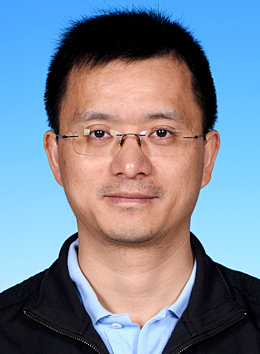
|
|
Tom Luo |
|
Professor |
|
Department of Chemical and Biological Engineering |
|
The Hong Kong University of Science and Technology |
|
Hong Kong SAR, China |
|
Personal homepage |
|
Title: Direct Growth of Heterostructure Synthesized by Chemical Vapor Deposition for Highly Efficient Self-Powered Photodetector |
|
Abstract: The utilization of 2D materials heterostructures, presents unparalleled possibilities for investigating their unique physical properties and serves as a foundation for the development of cutting-edge optoelectronic devices. Chemical vapor deposition (CVD) enables precise control over growth conditions, allowing for the achievement of heterostructures with clean interfaces. Recently, we have investigated various strategies to construct heterostructures with ultraclean interface using a one-pot CVD technique, eliminating the need for transfer steps. Extensive research has been undertaken across various domains to advance our understanding of CVD growth techniques for heterostructures based on transition metal dichalcogenides (TMDs) and their potential applications in photodetectors. Notably, our work demonstrated the fabrication of 1D Te and 2D TMDs van der Waals p-n heterostructures using a single-pot CVD method, showcasing self-driven behavior as a p-n diode with a strong photovoltaic effect. Furthermore, our recent work explores the manipulation of hydrogen purge to precisely control the morphology of MoO2-MoSe2 heterostructures. By employing interface design in these heterostructures to create a built-in electric field, our study demonstrated self-driven behavior, functioning as a robust photovoltaic p-n diode. The straightforward synthesis approach for achieving high-performance mixed-dimensional p-n junctions hold the potential to pave the way for the development of innovative electronic and optoelectronic devices.
References:
[1] You, J., Jin, Z., Li, Y., Kang, T., Zhang, K., Wang, W., ... & Luo, Z. (2024). Epitaxial Growth of 1D Te/2D MoSe2 Mixed-Dimensiona Heterostructures for High-Efficient Self-Powered Photodetector Advanced Functional Materials, 34(10), 2311134.
[2] Kang, T., Lu, Z., Liu, L., Huang, M., Hu, Y., Liu, H., ... & Luo, Z. (2023). In Situ Defect Engineering of Controllable Carrier Types in WSe2 for Homomaterial Inverters and Self-Powered Photodetectors. Nano Letters, 23(23), 11034-11042.
[3] You, J., Pan, J., Shang, S. L., Xu, X., Liu, Z., Li, J., ... & Luo, Z. (2022). Salt-assisted selective growth of H-phase monolayer VSe2 with apparent hole transport behavior. Nano letters, 22(24), 10167-10175.
[4] Kang, T., Jin, Z., Han, X., Liu, Y., You, J., Wong, H., ... & Luo, Z. (2022). Band Alignment Engineering by Twist Angle and Composition Modulation for Heterobilayer. Small, 18(29), 2202229. |
|

|
|
Iakov A. Lyashenko |
|
Professor |
|
Department of System Dynamics and Friction Physics |
|
Berlin Institute of Technology |
|
Germany |
|
Personal homepage |
|
Title: Interplay of Adhesion and Friction: Foundations and Applications in Nanomanufacturing |
|
Abstract: Measurements of adhesion forces both on macro and micro scales show that there exist "adhesion hysteresis" which manifests itself in different apparent specific work of adhesion in the phases of approach and detachment. In the present talk, we report both results of numerical simulation of adhesive contacts of rough surfaces using the full three-dimensional Boundary Element Method (BEM) and corresponding experimental results. The difference in apparent adhesion energies appears due to instable jumps of contact area, leading to irreversibility of the processes of both spreading and detaching adhesive contact [1,2]. These instabilities on the nano-scale lead to effective force of friction acting on the boundary of an adhesive contact. Similar effects occur during tangential relative movement of two bodies in adhesive contact. The instabilities lead to appearance of friction force even if both bodies are elastic. The reported results provide new insights into fundamental mechanisms of friction and can serve as designer rules for applications in nanomanufacturing.
References:
[1] Popov, V.L., Li, Q., Lyashenko, I.A. et al. Adhesion and friction in hard and soft contacts: theory and experiment // Friction 9, 1688–1706 (2021).https://doi.org/10.1007/s40544-020-0482-0.
[2] Dalvi, S., Gujrati, A., Khanal, S.R., Pastewka, L., Dhinojwala, A., Jacobs, T.D.B.. Linking energy loss in soft adhesion to surface roughness // PNAS 116 (51), 25484–2549017, 2019. https://doi.org/10.1073/pnas.1913126116. |
|

|
|
Kremena Makasheva |
|
Vice-President for Conferences |
|
IEEE Nanotechnology Council |
|
Director of Research |
|
National Centre for Scientific Research (CNRS) |
|
Laboratory on Plasma and Conversion of Energy (LAPLACE) |
|
France |
|
Personal homepage |
|
Title: Plasma-Based Synthesis of Silver Nanoparticles Embedded in Dielectric Matrices for Control of Charge Injection and Transport Phenomena |
|
Abstract: The current tendency in design of compact devices requires integration of different functionalities in the same scheme. A way to respond to this demand is to apply multifunctional components when assembling the device. Typically, these multifunctional components are under the form of piled very thin layers or nanostructures with specific patterns. They offer the possibility for transition from material level of development to system level of applications. For example, to provide a dielectric layer with enlarged and well-controlled electrical properties, one can use metallic nanoparticles dispersed in it.
In this general scheme our scientific approach concerns the multifunctionality of silver nanoparticles (AgNPs) embedded in silica layers to form very thin nanostructures. The attractivity of AgNPs is based on their multifunctional properties, which allows addressing a large variety of applications, as demonstrated by our team. The optical properties of AgNPs were used to elaborate highly-performant plasmonic structures aiming at a study of the conformational changes of proteins adsorbed on solid surfaces. Fine control of the AgNPs biocide properties was proved essential for fabrication of efficient and environmentally-friendly antimicrobial surfaces. The catalytic properties of AgNPs appear extremely helpful to advance our understanding and describe the role of metals in cosmic dust formation.
In particular, this contribution focuses on the electrical charge injection and transport in thin dielectric layers containing AgNPs. The response of these nanostructures under electrical stress was found to be finely controlled via the AgNPs, thus providing solutions to avoid electrostatic issues in MEMS RF switches and HVDC cables. Electron emission from dielectrics under irradiation, which is critical for space applications, also can be controlled by incorporation of AgNPs. Combination of different AgNPs functionalities offers even larger scope when envisaging device assembly and fabrication. |
|

|
|
João Mano |
|
Full professor |
|
Department of Chemistry |
|
The University of Aveiro (Portugal) |
|
Editor-in-Chief |
|
Materials Today Bio (Elsevier) |
|
Portugal |
|
Personal homepage |
|
Title: Magnetic Nanoparticles in the Development of Tissue Engineering Constructs Using Bottom-up and Top-down Approaches |
|
Abstract: Bioinspired engineered microenvironments provide cells with a holistic “instructive niche” that offers the adequate entourage for cellular control both in space and time. In bottom-up tissue engineering approaches small elements can be used as building blocks to be assembled into large constructs to produce macroscopic tissues. We have been proposing different strategies for generating such basic unit elements with well-defined combinations of cells and biomaterials. One possibility is to fabricate cell-rich membranes using magnetic force based tissue engineering. The cells internalised initially magnetic nanoparticles and are forced to accumulate into non-adherent surfaces using external magnetic fields. After maturation, cell constructs can be obtained with different geometries, sizes and stratified heterogeneous organizations. In particular, we developed thin cell micro-stamps that could be assembled into more complex structures. These magnetic cell membranes could be also magnetically stimulated to trigger some biological effects, including stem cell differentiation. We are also developing top-down tissue engineering solutions to produce hybrid scaffolds. Hollow channels in tissue engineering constructs are crucial for mimicking physiological environments and facilitating the rapid delivery of nutrients and oxygen to cells. We develop anzyme-based microparticles incorporating magnetic nanoparticles able to engrave channels by the action of an external magnetic field. This new concept could open new avenues in creating fully controlled channels, in a single, wireless, top-down and biocompatible step, in hydrogels or soft-materials, even with complex tortuosity. |
|

|
|
Santiago Miguel Olaizola |
|
Professor |
|
CEIT Gipuzkoa Centre for Technical Studies and Research |
|
Department of Materials |
|
University of Navarra |
|
Spain |
|
Personal homepage |
|
Title: New Applications of Volume Inscription of Materials with Femtosecond Lasers |
|
Abstract: Laser manufacturing in the (sub)micrometric range is a versatile tool used for different applications. Femtosecond lasers are now being used for different processes such as cutting, welding and surface texturing with high precision and velocity.
One of the unique characteristics of femtosecond laser beams is their capability to be focused inside transparent materials and trigger non-linear effects that produce a localized change on the optical properties of the material. This can be exploited for several applications, among which the most popular one is waveguide inscribing.
In this talk, we will discuss the fundamental aspects of volume inscription that must be taken into account to control the inscribed volume. This includes the optical aberrations and the non-linear effects associated with the high-power pulses in the femtosecond range. Finally we will discuss some applications of the technology such as optical isolation and diffraction gratings. |
|
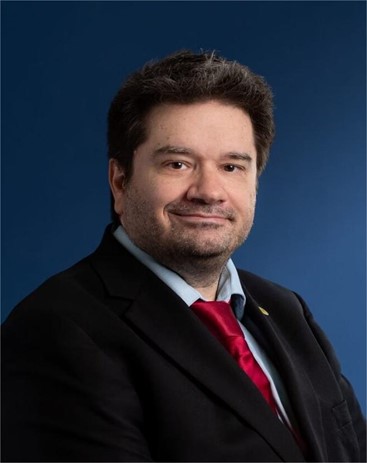
|
|
Federico Rosei |
|
Academia of the European Academy of Sciences |
|
INRS Centre for Energy |
|
Materials and Telecommunications |
|
Canada |
|
Personal homepage |
|
Title: Synthesis and Applications of (sometimes exotic) 2D Materials |
|
Abstract: Following the isolation of graphene in 2004, two dimensional materials (2DM) have been widely explored, due to the ease of synthesis coupled with excellent electronic and optoelectronic properties. Still, graphene’s zero bandgap and the fixed / large bandgap of inorganic 2DM limit their applicability in various technologies. We describe the synthesis and characterization of organic analogues of graphene, as well as the use of graphene and other 2DM in biomedical, environmental and energy applications.
References:
[1] Abdelkarim, O., Kaur, J., Liu, J., Navarro-Pardo, F., Zarrin, H., Yurtsever, A., Bassioni, G., Wang, Z. M., Selopal, G. S., & Rosei, F. (2020). Two-dimensional functionalized hexagonal boron nitride for quantum dot photoelectrochemical hydrogen generation. Journal of Materials Chemistry A, 8(39), 20698–20713. https://doi.org/10.1039/d0ta05260d
[2] Cardenas, L., Macleod, J., Lipton-Duffin, J., Seifu, D. G., Popescu, F., Siaj, M., Mantovani, D., & Rosei, F. (2014). Reduced graphene oxide growth on 316L stainless steel for medical applications. Nanoscale, 6(15), 8664–8670. https://doi.org/10.1039/c4nr02512a
[3] Dembele, K. T., Nechache, R., Nikolova, L., Vomiero, A., Santato, C., Licoccia, S., & Rosei, F. (2013). Effect of multi-walled carbon nanotubes on the stability of dye sensitized solar cells. Journal of Power Sources, 233, 93–97. https://doi.org/10.1016/j.jpowsour.2013.01.075
[4] Dettmann, D., Galeotti, G., MacLean, O., Tomellini, M., Di Giovannantonio, M., Lipton-Duffin, J., Verdini, A., Floreano, L., Fagot-Revurat, Y., Perepichka, D. F., Rosei, F., & Contini, G. (2021). Identification of Topotactic Surface-Confined Ullmann-Polymerization. Small, 17(41). https://doi.org/10.1002/smll.202103044
[5] Ebrahimi, M., & Rosei, F. (2017, February 23). Materials science: Organic analogues of graphene. Nature. Nature Publishing Group. https://doi.org/10.1038/nature21503
[6] Galeotti, G., De Marchi, F., Hamzehpoor, E., MacLean, O., Rajeswara Rao, M., Chen, Y., Besteiro, L. V., Dettmann, D., Ferrari, L., Frezza, F., Sheverdyaeva, P. M., Liu, R., Kundu, A. K., Moras, P., Ebrahimi, M., Gallagher, M. C., Rosei, F., Perepichka, D. F., & Contini, G. (2020). Synthesis of mesoscale ordered two-dimensional π-conjugated polymers with semiconducting properties. Nature Materials, 19(8), 874–880. https://doi.org/10.1038/s41563-020-0682-z
[7] Henni, A., Harfouche, N., Karar, A., Zerrouki, D., Perrin, F. X., & Rosei, F. (2019). Synthesis of graphene–ZnO nanocomposites by a one-step electrochemical deposition for efficient photocatalytic degradation of organic pollutant. Solid State Sciences, 98. https://doi.org/10.1016/j.solidstatesciences.2019.106039
[8] Ji, P., Galeotti, G., De Marchi, F., Cui, D., Sun, K., Zhang, H., Contini, G., Ebrahimi, M., MacLean, O., Rosei, F., & Chi, L. (2020). Oxygen-Induced 1D to 2D Transformation of On-Surface Organometallic Structures. Small, 16(35). https://doi.org/10.1002/smll.202002393
[9] Kaur, J., Malekkhouyan, A., Selopal, G. S., Wang, Z. M., Rosei, F., & Zarrin, H. (2021). Bidirectional Superionic Conduction in Surface-Engineered 2D Hexagonal Boron Nitrides. ACS Applied Materials and Interfaces, 13(5), 6532–6544. https://doi.org/10.1021/acsami.0c21234
[10] Li, S., Liu, W., Li, C. Z., Lau, T. K., Lu, X., Shi, M., & Chen, H. (2016). A non-fullerene acceptor with a fully fused backbone for efficient polymer solar cells with a high open-circuit voltage. Journal of Materials Chemistry A, 4(39), 14983–14987. https://doi.org/10.1039/c6ta07368a
[11] Li, X., Cai, W., An, J., Kim, S., Nah, J., Yang, D., Piner, R., Velamakanni, A., Jung, I., Tutuc, E., Banerjee, S. K., Colombo, L., & Ruoff, R. S. (2009). Large-area synthesis of high-quality and uniform graphene films on copper foils. Science, 324(5932), 1312–1314. https://doi.org/10.1126/science.1171245
[12] MacLean, O., & Rosei, F. (2019, December 13). Two-dimensional polymers grow up. Science. American Association for the Advancement of Science. https://doi.org/10.1126/science.aaz9326
[13] Mu, Y., Wang, Y., Li, Y., Li, J., & Yu, J. (2015). Organotemplate-free synthesis of an open-framework magnesium aluminophosphate with proton conduction properties. Chemical Communications, 51(11), 2149–2151. https://doi.org/10.1039/c4cc08964b
[14] Navarro-Pardo, F., Tong, X., Selopal, G. S., Cloutier, S. G., Sun, S., Tavares, A. C., Zhao, H., Wang, Z. M., & Rosei, F. (2019). Graphene oxide/cobalt-based nanohybrid electrodes for robust hydrogen generation. Applied Catalysis B: Environmental, 245, 167–176. https://doi.org/10.1016/j.apcatb.2018.12.041
[15] Sameie, H., Alvani, A. A. S., Naseri, N., Rosei, F., Mul, G., & Mei, B. T. (2018). Photocatalytic Activity of ZnV 2 O 6 /Reduced Graphene Oxide Nanocomposite: From Theory to Experiment . Journal of The Electrochemical Society, 165(7), H353–H359. https://doi.org/10.1149/2.0601807jes
[16] Selopal, G. S., Abdelkarim, O., Kaur, J., Liu, J., Jin, L., Chen, Z., Navarro-Pardo, F., Manzhos, S., Sun, S., Yurtsever, A., Zarrin, H., Wang, Z. M., & Rosei, F. (2023). Surface engineering of two-dimensional hexagonal boron-nitride for optoelectronic devices. Nanoscale, 15(38), 15810–15830. https://doi.org/10.1039/d3nr03864e
[17] Shi, L., Benetti, D., Wei, Q., & Rosei, F. (2023). MOF-Derived In2O3/CuO p-n Heterojunction Photoanode Incorporating Graphene Nanoribbons for Solar Hydrogen Generation. Small, 19(30). https://doi.org/10.1002/smll.202300606
[18] Wang, X., Zhang, Y., Li, J., Liu, G., Gao, M., Ren, S., Liu, B., Zhang, L., Han, G., Yu, J., Zhao, H., & Rosei, F. (2022). Platinum Cluster/Carbon Quantum Dots Derived Graphene Heterostructured Carbon Nanofibers for Efficient and Durable Solar-Driven Electrochemical Hydrogen Evolution. Small Methods, 6(4). https://doi.org/10.1002/smtd.202101470 [16] Small Meth. 6, 2101470 (2022). |
|
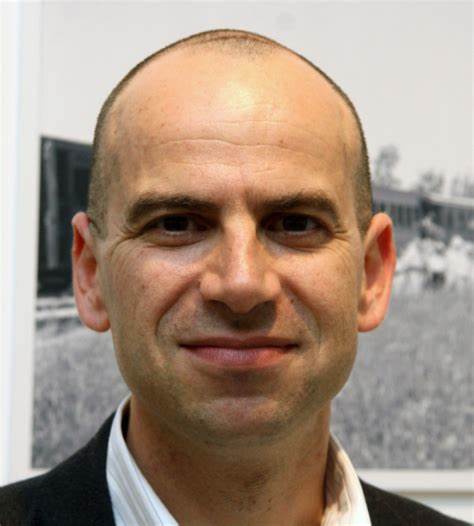
|
|
Dror Seliktar |
|
Associate Professor |
|
Department of Biomedical Engineering |
|
Israel Institute of Technology Sara & Moshe Zisapel Nanoelectronics Center |
|
Technion |
|
Israel |
|
Personal homepage |
|
Title: Gels in Biomedicine: Controlling Structure to Improve Performance |
|
Abstract: In the near future, hydrogels are expected to play a much greater role in biomedicine, changing the way we approach issues in stem cell research, cancer biology, drug discovery, tissue engineering and biotechnology. The development of improved methods to synthesize cell-compatible hydrogels to accommodate this trend depends on a thorough understanding of the design possibilities and the limitations. While biological systems provide an exceptional source of design inspiration for creating cell-compatible materials, man-made water-soluble polymers and polymer chemistry have contributed to the establishment of better control over the properties and reliability of the polymeric macromolecules, and subsequently, better control over the properties of the materials they form. Controlling the nano, micro and macro scale architecture of hydrogels has proven particularly effective in regulating cell response at the material-tissue interface. This presentation covers a few of the advanced design principles currently being applied to engineer cell-compatible biomedical hydrogels, with specific focus on how sophisticated new materials systems may lead the way to new discoveries in basic science, clinical medicine and biotechnology. |
|
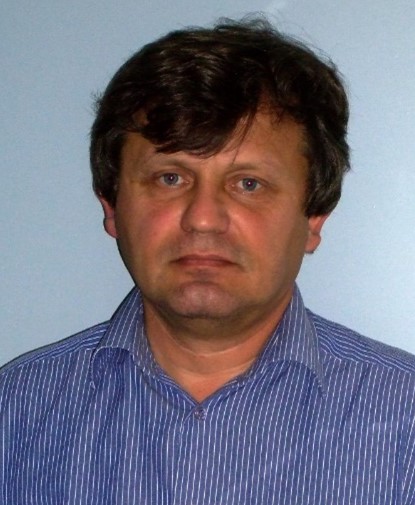
|
|
Vladimir Stavrov |
|
Business Analyst |
|
Master Data Management/Governance |
|
IBA Group |
|
Bulgaria |
|
Personal homepage |
|
Title: Piezoresistive MEMS Devices with Very Large Dynamic Range |
|
Abstract: Recent advances in development of three groups of MEMS devices comprising flexures with embedded self-sensing elements are briefly summarized. Performance results of are in-house developed devices that are fabricated by two different technologies for integration of planar and sidewall embedded piezoresistors, are presented in this paper.
First group of devices that exploit piezoresistive multi-cantilevers’ sensors for air quality monitoring (AQM) are presented. Low selectivity principle of operation is applied in these devices – plurality of electrical signals is simultaneously generated by independent groups of flexures, that are uniformly exposed to a set of stimuli. Flexural elements respond differently due to the specific layout and/or due to a specific functionalization. Thus, having sufficient number of independent signals, exact value of each stimulus can be calculated. To do so, machine learning procedure to be implemented and verified for any specific application. Boosting the sensitivity and reducing the noise level of the sensor signals are challenges of next envisaged R&D projects.
Second group of devices are dedicated to real time detection of specific analytes or objects having mass of about 10fg, that is typical for COVID-19 viruses. To do so, dedicated arrays of piezoresistive cantilevers were designed and a specific detection procedure was developed. Respectively, individual cantilevers in arrays that have controlled differences in resonance frequencies are designed and prototyped. Further, laser ablation method for tuning the resonance frequency of selected flexures was developed and demonstrated. Each array comprises reference and active cantilevers, latest being coated with functionalization layer that provides selective capture of a specific fragment like S-protein or similar. Works on cantilevers’ functionalization that can operate in air and/or liquids are currently running with partner organizations.
Third group of very broad range of devices exploit sidewall piezoresistors embedded into in-plane bendable flexures. Multiple displacement sensors, having stroke between 10µm and 2mm have been prototyped and characterized with different techniques. Providing as high as 275mV sensor signal @ 1V power supply, record high dynamic range of >5,000,000e scale intervals was demonstrated, during calibration of such sensors with similar referring devices.
Finaly, a success story of exploitation of piezoresistive cantilever and position sensors in an advanced corelative microscope Fusionscope®, is also reported.

|
|

|
|
Roy Vellaisamy |
|
Professor |
|
School of Engineering |
|
University of Glasgow, UK |
|
Chair Professor of Intelligent Systems |
|
School of Science and Technology |
|
Hong Kong Metropolitan University |
|
Hong Kong SAR, China |
|
Personal homepage 1
Personal homepage 2 |
|
Title: All About Surface - From Neuromorphic System to Point of Care Diagnostic Tools |
|
Abstract: Surface science has been playing a greater role in high frequency applications, neuromorphic devices and advanced sensors. For instance, the fundamental physical properties of neuromorphic artificial intelligence system which is considered to be the future of ultrahigh performance computing can be tuned by adapting materials with tuneable surface states. To elucidate biomimicking mammalian brain synapses, we have reported a new class of Topological Neuristors (TN) consisting of topological insulators where the bioinspired neural network characteristics of TNs are significantly influenced by the surface state properties of topological insulator (TI) materials. With augmented device and TI material design, we demonstrate effective earning-relearning-forgetting stages and capable of reading EEG signals1,2. On the other hand, we have developed functionalised surface based impedimetric sensing platform to detect urinary zinc and spermine in both artificial and clinical urine samples. Our approach lies in integrating label-free impedimetric sensing and the introduction of porosity through surface engineering techniques3. Our sensor’s recognition layer is engineered to exhibit enhanced surface properties, critical for improving the sensitivity, capture, and interaction with multiple biomarkers for implementation as a point of care diagnostic tool.
Key words: Artificial synapse, Neuromorphic devices, Point of care diagnosis.
Reference:
[1] Topological Quantum Switching Enabled Neuroelectronic Synaptic Modulators for Brain Computer Interface; Dani S. Assi, Hongli Huang, Vaithinathan Karthikeyan, Vaskuri C. S. Theja, Maria Merlyne de Souza, and Vellaisamy A. L. Roy, Advanced Materials 2024, 36, 2306254
[2] Quantum Topological Neuristors for Advanced Neuromorphic Intelligent Systems; Dani S. Assi, Hongli Huang, Vaithinathan Karthikeyan, Vaskuri C. S. Theja, Maria Merlyne de Souza, Ning Xi, Wen Jung Li, and Vellaisamy A. L. Roy, Advanced Science 2023, 10, 2300791
[3] Rapid Near-Patient Impedimetric Sensing Platform for Prostate Cancer Diagnosis; Parisa Dehghani, Vaithinathan Karthikeyan, Ataollah Tajabadi, Dani S. Assi, Anthony Catchpole, John Wadsworth, Hing Y. Leung, and Vellaisamy A. L. Roy, ACS Omega 2024, 9, 12, 14580–14591 |
|

|
|
Ning Xi |
|
Chair Professor |
|
Robotics and Automation |
|
Director |
|
Advanced Technologies Institute |
|
The University of Hong Kong |
|
Hong Kong SAR, China |
|
Personal homepage |
|
Title: Nano Robot Enabled In Situ Sensing and Manipulation for Biomedical Applications |
|
Abstract: As we enter into the post-genomic era, increasing attention has been focused to characterization of the structure and function of molecules. Understanding the location, structure, and dynamics of these molecules is of fundamental importance to elucidate their function. To gain insights into how these molecules operate, advanced technologies are required for gaining information at the level of cells and molecules. Nano robot technology has been developed to meet such challenges. The unique capability of the nano robot to directly observe and manipulate molecules in their native environments has provided insights into the interaction of proteins that form functionality assemblies. While recognition of individual protein such as specific cell membrane receptor is still a challenge, the technique to use nano robots to recognize and manipulate specific molecules such as antibodies establishes a promising way to identify proteins in a specific manner. This talk will present state-of-the-art techniques enabling in situ sensing and manipulation at cellular and molecular levels using nano robots. Examples of applications such as identification of biomarkers for drug discovery and therapeutic delivery will be discussed. |
|

|
|
Ronald X. Xu |
|
Professor |
|
Fellow of the Institute of Physics |
|
Senior member of the Society of Photo-Optical Instrumentation Engineers (SPIE) |
|
University of Science and Technology of China (USTC) |
|
China |
|
Personal homepage |
|
Title: Oxygen Sensing and Transport for Vascular Tissue Engineering |
|
Abstract: Oxygen is a key substance in the metabolic mechanism of organisms and an important material basis for maintaining life activities. Imbalanced oxygen supply and consumption plays a pivot role in many acute and chronic diseases such as stroke, diabetic wounds, and tumors. Maintaining an exquisite balance between Precise detection, accurate delivery and dynamic regulation of oxygen transport remain a major challenge in bioprinting of vascularized large tissues and organs. Over the past few years, we have developed and validated several oximetry techniques and artificial intelligence algorithms for non-invasive assessment of oxygenation and perfusion. We have also developed and tested several micro/nano-encapsulation processes for controlled delivery and stimuli-responsive release of oxygen. We are currently applying these imaging and microfabrication techniques to construct perfusable and regenerative vascular networks in preparation for bioprinting of large tissues and organs. |
|
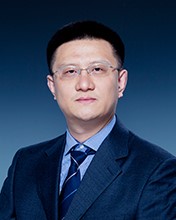
|
|
Zhen Zhang |
|
Professor |
|
Design and Control of Precision Optomechatronic Systems Lab |
|
Department of Mechanical Engineering |
|
Tsinghua University |
|
China |
|
Personal homepage |
|
Title: Precision Optomechatronic Systems for Large-Area Scanning Probe Lithography and Laser Microprocessing |
|
Abstract: Precision optomechatronic systems play crucial role in various emerging applications such as laser precision manufacturing and scientific instrument. This talk will present our recent work of control of precision optomechatronic systems and its applications in large-area tip-based nanolithography, characterization and laser microprocessing We will show how to design and control precision optomechantornic system to enable large area, high throughput scanning probe lithography and laser microprocessing without stitching. |
Editors' Session
|

|

|

|
|
Shaoying Cui |
Tom Luo |
João F. Mano |
|
Deputy Editor |
Associate Editor |
Editor-in-Chief |
|
Advanced Science |
ACS Applied Materials & |
Materials Today Bio |
|
Advanced Engineering Materials |
Interfaces |
|
|
In-house Editor at Wiley |
|
|
|
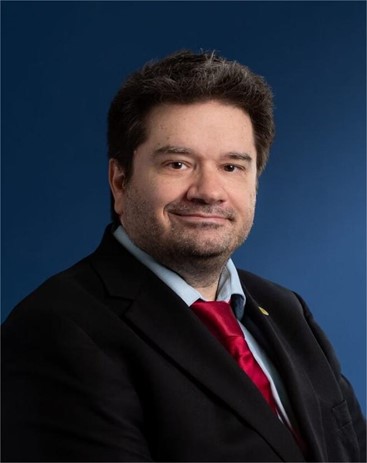
|
|
|
|
|
Federico Rosei |
|
|
|
|
Inaugural Editor-in-Chief |
|
|
|
|
RSC Applied Interfaces
|
|
|
|
*The list of Keynote Speakers is based on the alphabetical order of family names |
|

